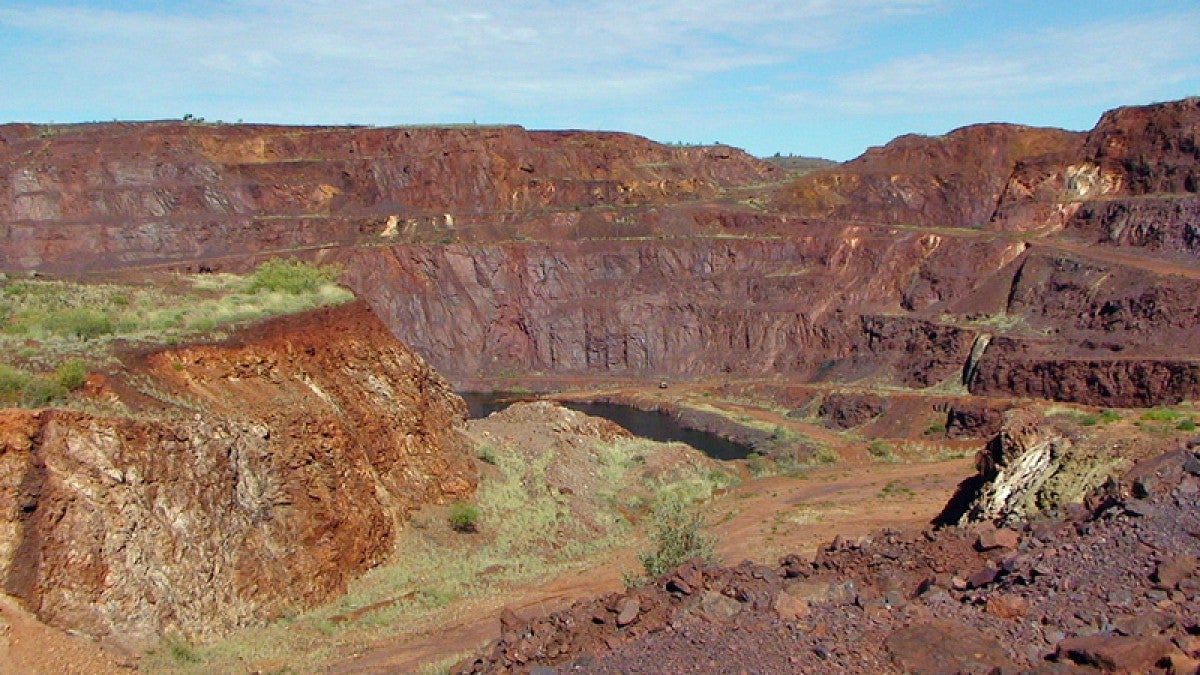Life on land may have begun much earlier than anyone thought.
"Life was not only present but thriving in soils of the early Earth about two thirds of the way back to its formation from the solar nebula," according to the UO's Greg Retallack, a professor in the Department of Earth Sciences and director of paleontology collections at the Museum of Natural and Cultural History.
The formation of the solar system — and Earth's origin — occurred some 4.6 billion years ago, which means the organisms would have been present about 3 billion years ago. In a newly published paper, Retallack's UO team says that soils were alive long before trees or lichens evolved.

Retallack's team focused on microfossils in the rocks using equipment at the UO's Center for Advanced Materials Characterization of Oregon.
The tiny fossils require a microscope to see and probably represent whole organisms, Retallack said. The rocks had long been thought to be of marine origin; however, "a closer look at the dusty salt minerals of the rocks suggests they had to have experienced evaporation on land," he said.
Other mineral and chemical tracers found in the rocks also required weathering in soils of the distant geological past, he said.
The study considered at least five different kinds of microfossils recognized from their size, shape and isotopic compositions.
The largest and most distinctive microfossils are spindle-shaped hollow structures of a mold-like bacteria — a mostly land-based group of decomposers that are responsible for the characteristic earthy smell of garden soil. Other sphere-shaped fossils are similar to purple sulfur bacteria, which photosynthesize organic compounds in the absence of oxygen while leaving abundant sulfate minerals in the soil.
“With cell densities of over 1,000 per square millimeter and a diversity of producers and consumers, these microfossils represent a functioning terrestrial ecosystem, not just a few stray cells," Retallack said. “They are evidence that life in soils was critical to the cycles of carbon, phosphorus, sulfur and nitrogen very early in the history of the planet.”
The findings are likely to keep stirring debate. In a 2012 paper in the journal Nature, Retallack drew criticism when he argued that the ancient fossils are a primitive precursor to lichen or fungi and that helped colonize land.
Scientists have long pointed to stromatolites, a life form that emerged 3.7 billion years ago, and other ocean life as evidence that living organisms evolved in the sea and migrated into intertidal rock formations.
The ancient soils from Australia's Pilbara region, Retallack said, are similar to those found recently by the Mars rover Curiosity. "They may," he said, "be useful as guides for the discovery of life on other planets."
Co-authors on the paper were David H. Krinsley, who holds a courtesy appointment in the UO Department of Earth Sciences, and Robert Fischer, Joshua J. Razink and Kurt A. Langworthy, all of the Center for Advanced Materials Characterization of Oregon.
—By Jim Barlow, University Communications
(NOTE: The photo of the abandoned pit at Mount Goldsworthy near Mount Grant in Western Australia was taken in 2009 by Philip Schubert and is licensed by Creative Commons)
Greg Retallack is an expert in global climate change, mass extinctions, major evolutionary transitions, ancient Mars environments, and the origin of life. Learn more about Retallack, and find more UO experts on the Media Relations website.


